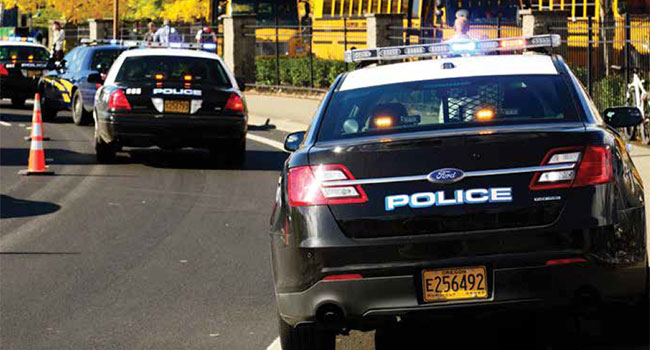
A School Lockdown
Prioritize what needs to be done first for a positive outcome
- By Karen Evans
- July 01, 2016
SCHOOL SECURITY HAS BECOME AND CONTINUES TO BE
A MAJOR FOCUS ACROSS THE UNITED STATES, AS
MUNICIPALITIES, SCHOOL DISTRICTS, LAW ENFORCEMENT,
STATE LEGISLATURES AND OTHERS WORK TO
IMPLEMENT SECURITY PLANS. ONE POSITIVE OUTCOME
THAT HAS RESULTED FROM THESE ACTIVITIES IS THE
EXPANDED UNDERSTANDING OF AND READINESS FOR
A LOCKDOWN SITUATION.
PROPER PROTOCOL
Regardless of whether a lockdown situation occurs because of an
intruder, a threat against the school or severe weather, it is important
to plan for what happens after the lockdown is initiated. This is true for
schools, and also for hospitals, government and retail locations that
have similar plans in place.
All schools are different, so there is no “one size fits all” lockdown
protocol that is appropriate for every school. Protocols and procedures
must reflect differences in school design, size and location, as well as
the response capabilities of local law enforcement and emergency personnel.
While standardizing lockdown protocols may seem excellent
in theory and even during basic drills, significant gaps may emerge
when those protocols are tested by an actual emergency.
Because the focus of the lockdown is on locking doors, covering
windows and moving occupants to the safest locations in each room, it
is often impossible for first responders to know the status and situation
of occupants of these locked rooms. This makes it challenging to determine
the appropriate response to a situation and decide how to proceed,
which may create delays that could potentially place occupants in
greater danger.
To minimize unnecessary delays and ensure the most efficient and
effective emergency response, there are four key elements schools can
include in their lockdown planning.
CONSULT WITH LOCAL LAW ENFORCEMENT
OFFICIALS ON CRISIS PLANNING
A 2015 education industry study conducted by Motorola found that
while the overwhelming majority (97 percent) of schools have a safety
plan in place, only 50 percent of those plans include both school staff
and public safety. It is quite possible that a school’s internal emergency
protocol for students, staff and visitors could be in direct opposition to that used by first responders to address an emergency situation. The
resulting confusion could increase risk that further jeopardizes the
safety and security of all involved. Creating emergency response plans
must be a collaborative effort between schools and responders.
Once put into place, plans must be practiced through drills with
emergency responders and other relevant parties involved, such as
hospitals and emergency management agencies.
PROVIDE FIRST RESPONDERS
WITH A DIRECT CONNECTION
In order to determine the appropriate course of action and ensure the
highest possible level of safety for occupants, first responders require as
much information as possible about an emergency. The greater the situational
awareness they have, the more effective the response will be.
In an emergency, seconds can make a tremendous difference in
the outcome, so it is crucial that responders are able to gather information
about occupants’ location and current status as quickly as
possible. Making that critical information available and accessible
within a secure status system is vitally important, and making the
system directly accessible by first responders from off-site, ideally via
mobile connection, will significantly contribute to the success of
emergency response.
Consider installing hallway sensors and/or cameras to help
responders track intruders and/or other responders.
Having information about occupants in hand is one piece of the
information puzzle that first responders need. Another critical component
is being able to locate and track an intruder within a building
prior to arriving on site, and to track responders once they’ve entered
the building. The safety of all occupants relies heavily on this, and both
hallway sensors and video surveillance cameras can help by providing
vital information about the whereabouts of people as they move
throughout the building, especially when used together.
Consider installing provisions for private, two-way communication
with locked-down areas.
Situational awareness during an emergency is further heightened
by communication, and the ability to communicate with individuals
within the school, particularly those in locked-down areas, adds
critical information to strengthen responders’ situational awareness
in an emergency.
However, public address systems are not viable options. When these
systems are used to provide building-wide updates to students and
staff, they also provide an intruder with information that could jeopardize
the safety of everyone inside the school. A private two-way solution
allows communication with locked-down areas without alerting
intruders or causing confusion among building occupants.
Private communication solutions significantly improve the safety
and security of locked-down building occupants and the ability for
first responders to maintain order, even as they attend to the most
critical situations first.
The unfortunate reality is that school safety and security concerns
are only going to increase and it is incumbent upon schools to make
sure their students and staff are well-prepared
for an emergency situation. Including these four
key elements in emergency planning will help
first responders do their jobs more effectively in
an actual emergency situation and in the immediate
aftermath of an incident.
This article originally appeared in the July 2016 issue of Campus Security Today.